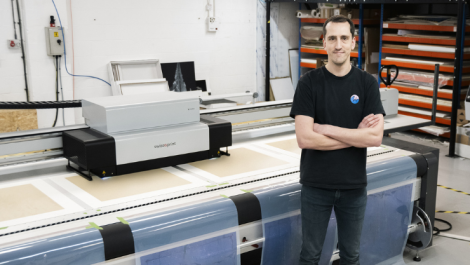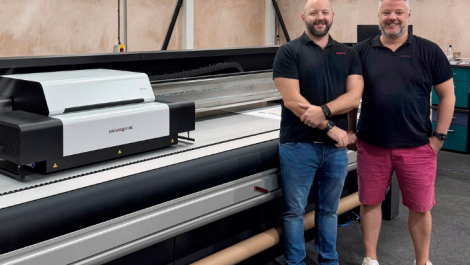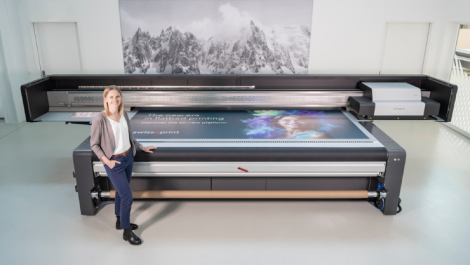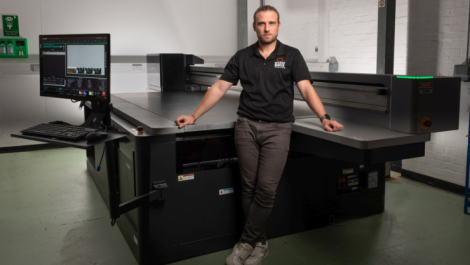Fujifilm used Fespa to launch two new wide-format printers, the Acuity Prime L, and the Acuity Ultra Hybrid, the former adding a 3.2 x 2m flatbed option to the existing Prime range and the latter marking the company’s first high-performance hybrid option.
Featured among six wide-format printers that David Burton, director, Fujifilm Wide Format Inkjet Systems stated had not existed a year ago, the new models expand Fujifilm’s in-house designed line that has been developed since the end of the OEM agreement with Canon for the Arizona flatbeds.
The Acuity Ultra Hybrid is a 3.3m printer that offers speeds of up to 218sqm/hr on flexible media though less on rigid substrates. Print resolution is up to 1200 x 1200dpi and Fujifilm says that the machine combines ‘ultra-high’ quality for ‘near photographic’ interior graphics with a competitive return on investment. A dimpled table surface is said to support a wide range of media types, with protection against accidental damage and accurate media feed. This is complemented by an intelligent vacuum control system that adjusts to the loaded media width and adjusts vacuum strength to hold it down securely. A dual roll option allows rolls of different diameters up to 36cm to be loaded and printed simultaneously; it also has a facility for loading part-used rolls for minimal material wastage, via a dedicated feeder.
The Acuity Prime L complements the Prime 20 and 30 models introduced last summer and offers up to 202sqm/hr thanks to larger bed size. It uses the same carriage and Ricoh Gen 5 printheads as its smaller siblings, with six vacuum zones and 16 media location pins, plus the ability to print side-by-side jobs with a dual zone function. The Prime L supports up to seven ink channels (CMYK, plus white, clear and primer). It uses Uvijet HM inks formulated specifically for the Acuity Prime series, which is said to yield excellent adhesion to a broad range of substrates while also producing a wide colour gamut. This is augmented by a new jettable primer for particularly difficult substrates, removing the need for offline pre-treatment of substrates before printing.
Both new printers are currently in beta testing and will be available in autumn 2022.





